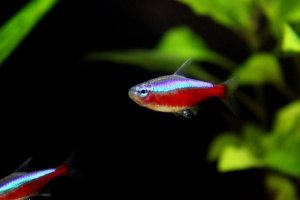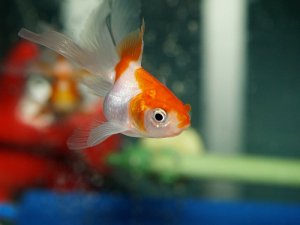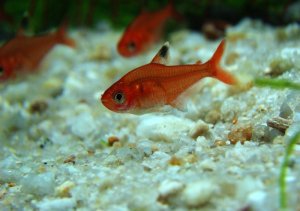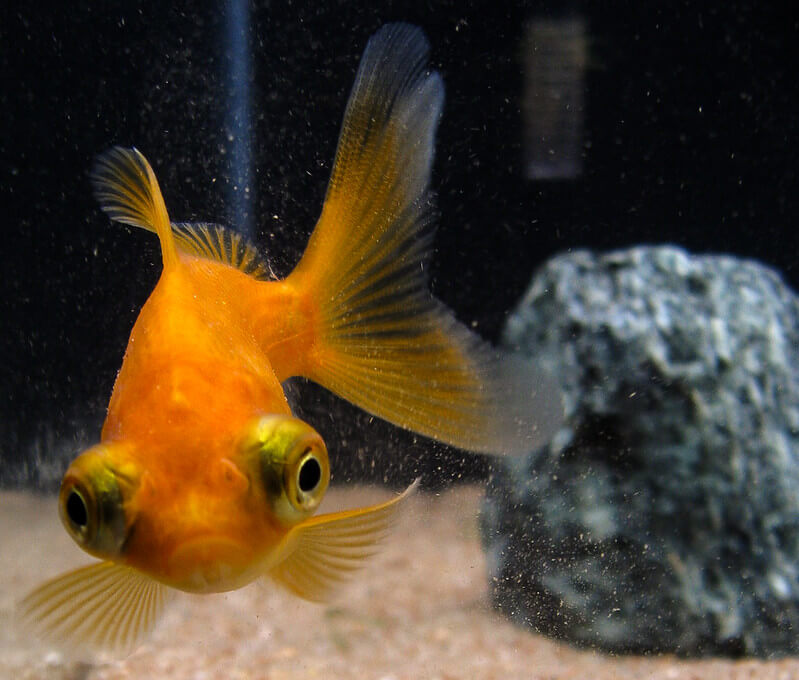
If you have ever seen goldfish with big eyes in your local aquatics store or online, you may have wondered what is the real name of these enigmatic fish – and are they a good choice for beginners?
These fish are actually called telescope goldfish, and can make great pets for different levels of experience. This guide will go over the butterfly telescope, black moor, and a rare variety that lacks certain pigment producing chromatophores – the panda eye telescope goldfish.
Telescope Goldfish Tank Setup And Parameters:
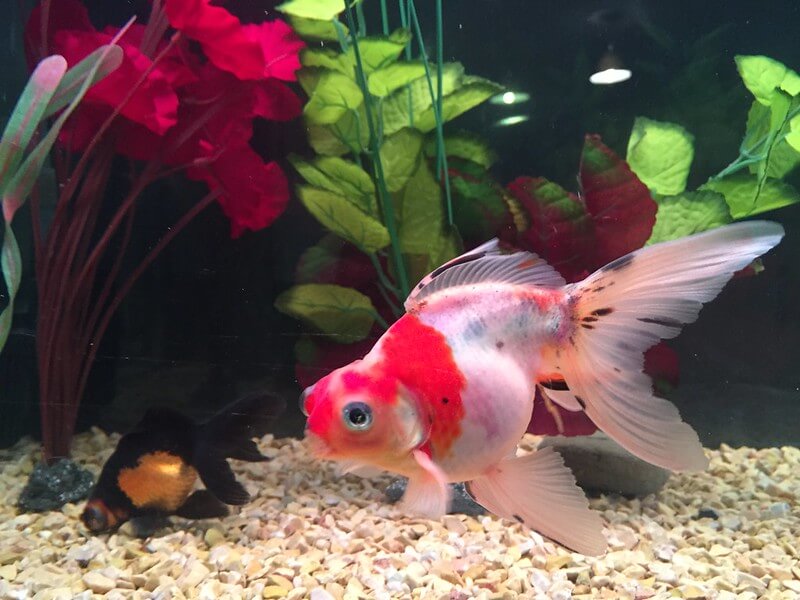
Before choosing a telescope goldfish variety, you may ask what’s actually needed to keep these fish. In general, all varieties of telescope goldfish have similar requirements. For tank setup, the following parameters are recommended:
- Size: 30 gallons/114 liters minimum, and add an extra 10 gallons (38 liters) for each additional fish. This may seem large compared to how small these fish are when you buy them, but remember they will soon grow, and stress from overcrowding can even change their physical development.
- Substrate: sand or gravel
- Filtration: flow rate minimum 4x tank flow capacity
- Ammonia and nitrates: zero
- pH level: 7-8
- Water Hardness: 5-19 dGh
- Temperature: 15-23 C 60-74 F
- Lighting: LED
- Tank Maintenance: clean with an aquarium vacuum once a week and wash the filter in tank water every three months
- Feeding: telescope goldfish enjoy the same balanced diet of vegetable matter, protein, and sinking pellet food as other goldfish. The important thing is not to feed floating pellets or flakes, with their impaired field of vision they can’t see these on the surface of the water. It’s also best not to feed live invertebrates as your fish won’t be able to catch them.
Choosing A Goldfish With Big Eyes
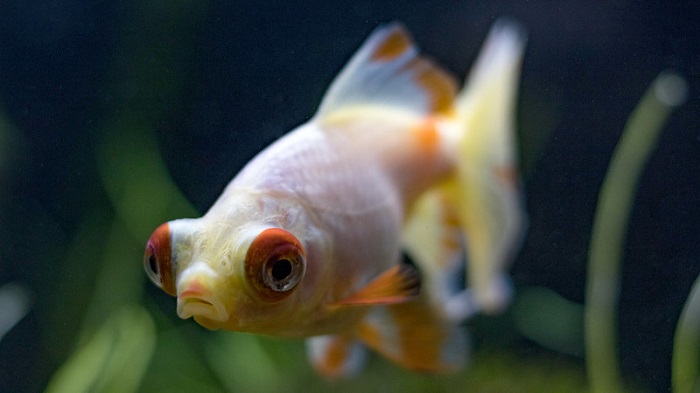
If you’re looking to create a mixed tank or community tank, you may be considering a big-eyed goldfish. If you already have other fish in the tank, bear in mind that the telescope goldfish cannot be paired with hardy goldfish like the comet, common goldfish, or shubunkin, as it will be outcompeted. However, these 3 telescope goldfish types below may help narrow down your choice.
3 Telescope Goldfish Types
If you love goldfish with big eyes, it helps to understand that they have poor vision and that this is the main thing that separates them from other goldfish varieties. However, once you understand how your aquatic pets perceive their environment, looking after them is simple.
1. Butterfly Telescope Goldfish
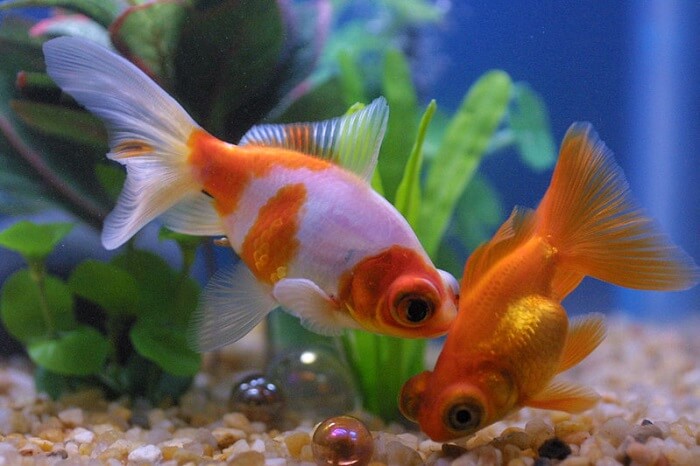
The butterfly telescope goldfish is a beautiful, delicate-looking telescope goldfish that was first bred as recently as the 1990s! For a truly unusual fish, this might be one of the best options, although bear in mind they are slightly harder to look after than other kinds of telescope.
They have a lovely flowing double tail, which does mean they are slightly slower swimmers. However, they can thrive in the right kind of tank setup.
Things To Note:
Like all telescope goldfish, the butterfly telescope has sensitive eyes. Therefore if you want to reduce stress for this fish, choose a LED light that is heavier in green light, as this has less of an impact on your fish’s delicate vision, reduces their overall levels of stress, and improves their wellbeing.
Temperament:
Butterfly telescope goldfish are more gentle and shyer than some of their counterparts. This is because their fan shaped tails mean they only swim slowly. They are perfect if you want an ornamental goldfish that isn’t as likely to dig up plants as some other kinds of fish!
2. Black Moor Goldfish
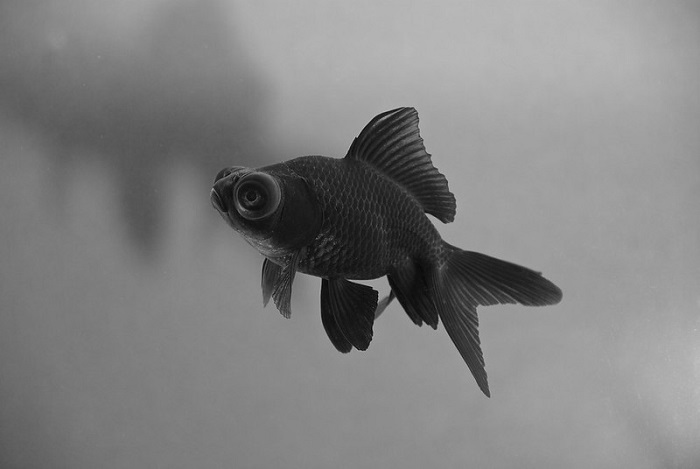
You may suppose that like the butterfly telescope goldfish, the black moor is a modern variety of telescope goldfish due to its unusual coloring. However, it has in fact been kept since the 1500s in China, where it originated. The black pigment is caused by specialist cells called melanocytes and it is harmless to your fish. If you want to care for a black moor, their striking looks and relatively simple requirements will not let you down.
Things To Note:
The black moor goldfish is naturally a dark color although can lose this as they age. If you have a different variety of goldfish that is turning black or changing color, this can be a sign your fish is sick.
Temperament:
This is a shy goldfish that is nevertheless a stronger swimming and hardier than the butterfly telescope. It prefers to be kept in groups and enjoys the middle of the tank. The black moor, like all telescope goldfish, doesn’t need as much stimulation as hardy goldfish like the comet.
3. Panda Telescope Eye Goldfish
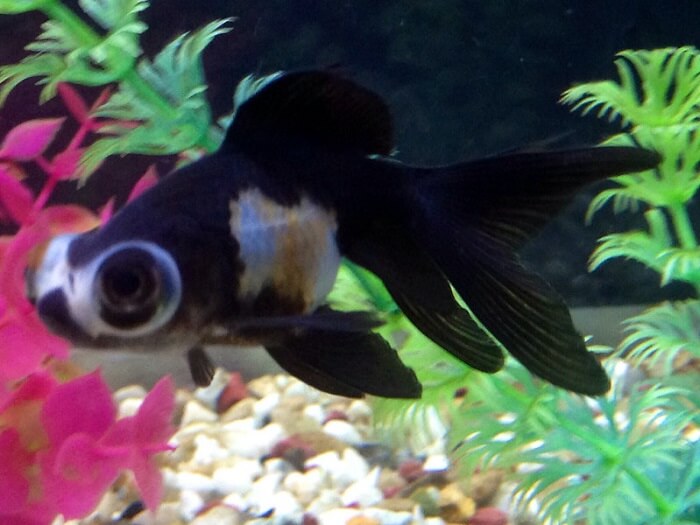
The panda telescope goldfish is a variety of black moor goldfish that has select black pigment around its eyes, giving it an appearance similar to a panda. It is a striking looking fish that is not too different to look after compared to the black moor.
Things To Note:
This fish’s pale coloring is caused by nacreous scales that have an absence of the compound guanine that normally gives fish scales their metallic look. These kinds of scales mean its pale body is slightly more sensitive to light. As with protecting your fish’s eyes, green light can be gentler on these guys.
Temperament:
The panda telescope goldfish is very calm and gets on well with other fish that have similarly impaired vision. It does not differ too much from the black moor, although it is a bit less hardy.
What Is The Difference Between The Panda Telescope Eye Goldfish And The Black Moor?
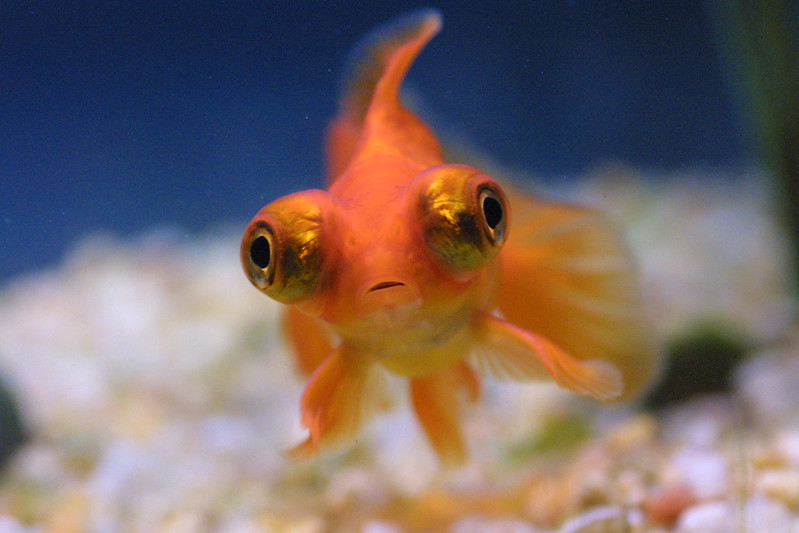
Although it originated from the black moor and could be said to be a variant of it, the panda telescope eye goldfish is a much more modern variety. As a result it has undergone a lot of breeding leading to the veilteil panda telescope eye and other varieties.
Ease of care compared to a black moor you would find in a pet store depends on weather your fish has a flowing tail in addition or other features. Likewise the panda variant tends to refer to the pattern – this fish can also come in orange or red bicolor varieties.
Eye Infections In Big Eyed Goldfish
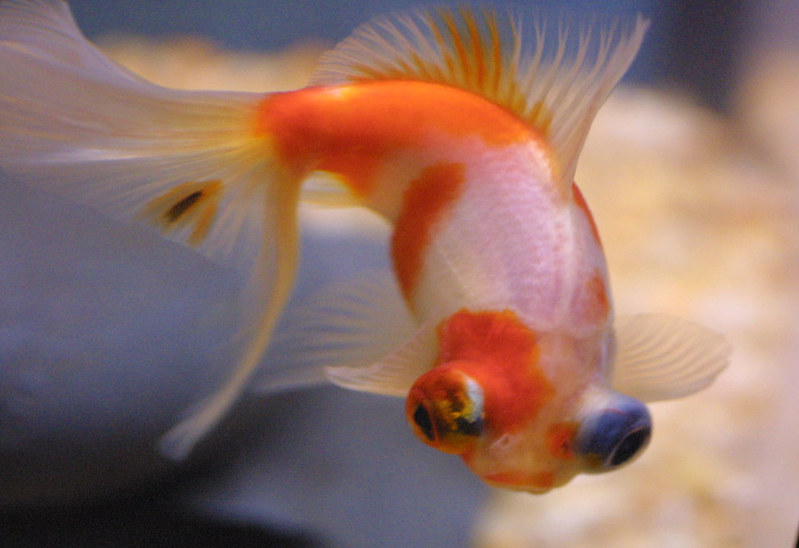
Eye infections often result from poor water quality and include diseases such as pop eye and cloudy eye, which are caused by bacterial infection. They can reduce your fish’s already limited vision. In addition, because the eyes are such a sensitive area, they can be very painful for your fish!
Eye infections are not contagious from fish to fish, but it’s best to isolate the infected goldfish in a separate tank and treat the infection with specialist medication.
Tankmates: Can Telescope Goldfish Live Together?
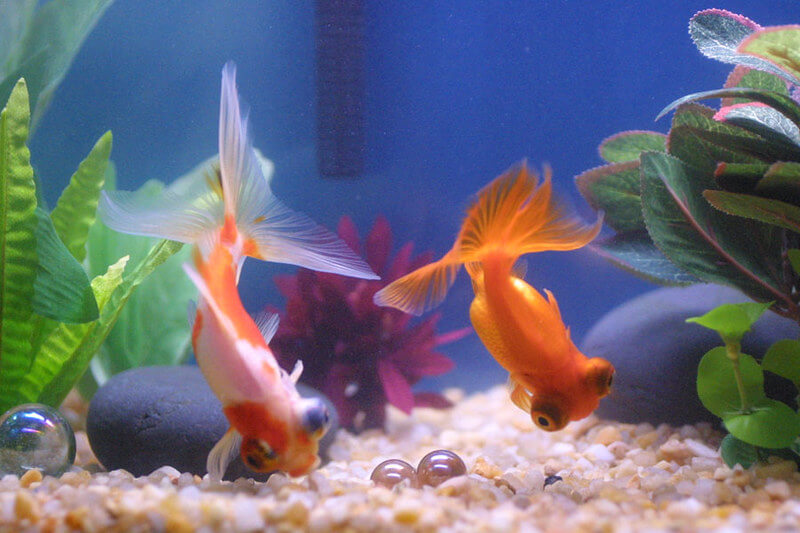
By this point, you may be wondering whether telescope goldfish can live with other, different kinds of telescope goldfish. If you can’t decide between the different varieties, it is possible to keep a successful community tank, although the black moor particularly prefers 3-6 of it’s own kind.
Telescope goldfish can also live with tankmates that aren’t goldfish. These peaceful fish are great as they won’t harass smaller fish, and they generally keep themselves apart from tankmates like zebra danios, barbs, or snails.
Final Thoughts
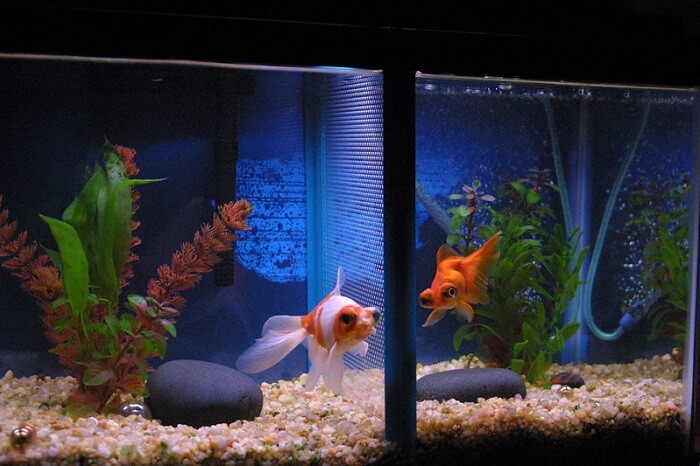
If you’ve already kept some fancy goldfish and are looking for a new kind of fish to care for, the telescope goldfish is an excellent choice. However, even at a beginner level, the black moor can make a great introduction to them. Either way, these are distinctive fish, and this guide will help you decide whether you want to take one of these beautiful creatures home.


